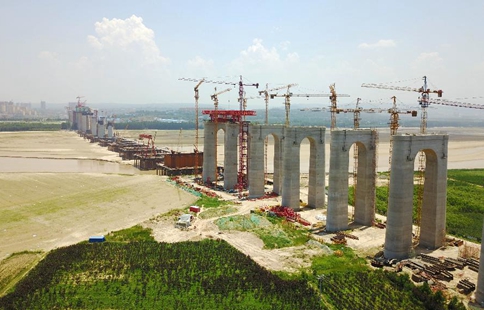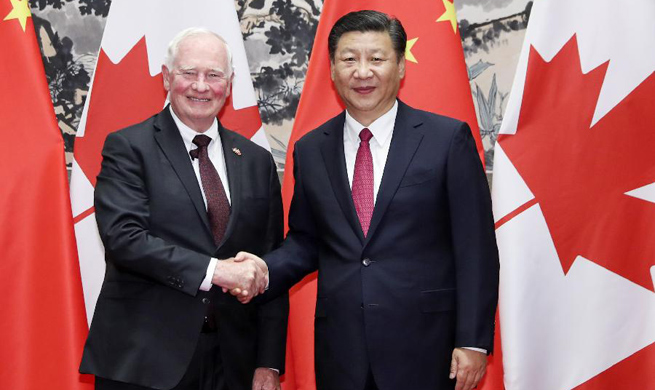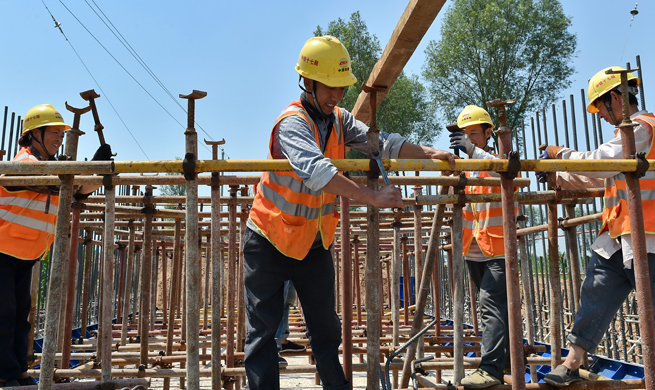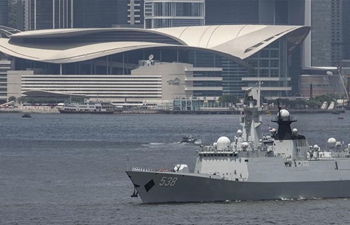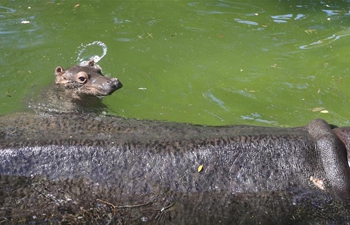SAN FRANCISCO, July 13 (Xinhua) -- Researchers at the University of California, San Francisco, have shown that cellular antennae called cilia, found on fat-forming cells interspersed in muscle, play a key role in the muscle-to-fat transformation.
The findings, revealed in experiments with mice and published Thursday in Cell, could open up new prospects for regenerative medicine, and one day enable researchers to improve muscle renewal during aging and disease.
Like it or not, as we age, our muscle cells are slowly exchanged, one by one, for fat cells. The process quickens when we injure a muscle, and an extreme form of this process is seen in muscle-wasting diseases such as Duchenne muscular dystrophy (DMD). High levels of intramuscular fat have long been associated with a loss of strength and impaired mobility, as well as more falls in elderly or obese individuals, and in patients with DMD.
"The frailty of age is a huge biomedical problem," said Jeremy Reiter, a professor of biochemistry and biophysics at UCSF and senior author of the new paper. "This study helps pave the way to learn how muscles normally age, and provides a new way to possibly improve muscle repair."
Primary cilia are tiny cellular appendages a bit like the cellular tentacles that paramecia and other single-celled critters use to move and gather food. But unlike those motile cilia, primary cilia do not move at all. They stand stiff and solitary on the surface of nearly all of our cells, including neurons, skin cells, bone cells and certain stem cells.
Recent work at Reiter's lab has revealed that primary cilia act much like cellular antennae, receiving molecular cues from neighboring cells, and processing environmental signals such as light, temperature, salt balance and even gravity. And previous work has shown that when muscle is injured, fat-forming cells that live alongside muscle cells, called fibro/adipogenic progenitors (FAPs), divide and differentiate into fat cells.
Daniel Kopinke, a postdoctoral fellow in the Reiter lab and first author of the new study, found that, unlike muscle cells, the fat-forming FAPs are more likely to carry primary cilia, and that muscle injury further increased the abundance of FAPs with cilia. These observations suggested that cilia might be playing an important role in fat formation.
To test this hypothesis, the research team used two mouse models of muscle injury, namely an acute injury model created by injecting damaging agents into mouse muscles and a chronic injury model with progressive loss of muscle fibers such as that seen in in DMD. When the researchers genetically blocked the ability of FAPs to form cilia, both injury models showed lower amounts of fat in muscle. In addition, the loss of cilia not only led to the loss of fat, but also aided muscle regeneration.
Through a series of experiments, the group discovered that genetically engineering cells without cilia had resulted in a low-level activation of the Hedgehog pathway, which was enough to block fatty degeneration of skeletal muscle. When the researchers used other methods to amplify Hedgehog signaling, mouse muscle again became less fatty.
With further investigation, the researchers found that a key protein in the Hedgehog pathway called TIMP3 was responsible for the effect. By using a small molecule called batimastat, which mimics the effects of TIMP3, they were able to block injury-induced fat formation in muscle.
"Now for the first time we have a handle on the cell type that turns muscle into fat, and we have a handle on the signaling pathway that controls the conversion," Kopinke was quoted as saying in a news release from UCSF. "Maybe one day we could use this knowledge to improve muscle function."






